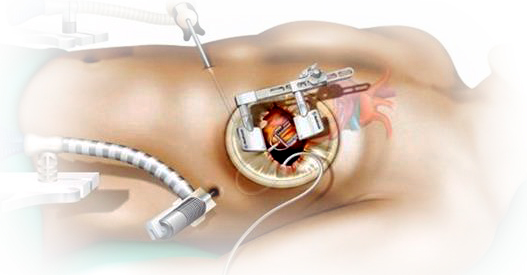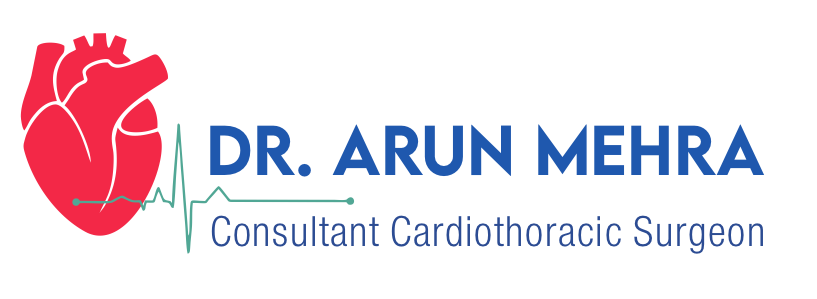MICAS
MICAS stands for “Minimally Invasive Coronary Artery Surgery”
 Traditionally Coronary artery Bypass surgery was done using cardio (heart) – pulmonary (lungs) bypass. This meant that the heart and the lungs of the patient were allowed to rest while a pump (artificial heart) and oxygenator (artificial lungs) system were used to carry out the functions of the heart and lungs. The normal function of the lungs is to remove carbon dioxide from the body and give oxygen to it. The normal function of the heart is to pump blood under pressure to various parts of the body.
Traditionally Coronary artery Bypass surgery was done using cardio (heart) – pulmonary (lungs) bypass. This meant that the heart and the lungs of the patient were allowed to rest while a pump (artificial heart) and oxygenator (artificial lungs) system were used to carry out the functions of the heart and lungs. The normal function of the lungs is to remove carbon dioxide from the body and give oxygen to it. The normal function of the heart is to pump blood under pressure to various parts of the body.
Since the last few years, technology has become available to stabilize the heart and to permit the lungs and the heart to carry out their normal functions while the surgeon performs the operation on the heart. This is called “beating heart surgery.”
Some surgeons initially started operating the patients from a small incision on the side of the chest and called it Minimally Invasive Coronary Artery Surgery or MICAS. Sometimes this surgery can be done using an endoscope or a robot also. The surgeon still would find it difficult to operate on all the arteries to the back of the heart.
However it was soon realized that the best way to operate the patient was from the centre of the chest, through the breast bone or the sternum, as the surgeon could perform a complete operation and bypass all the arteries. As the patient is not put on cardiopulmonary bypass, it is still labelled as a variety of Minimally Invasive Coronary Artery Surgery .As the access to the heart is direct, some call it Minimally Invasive Direct Coronary Artery Bypass or “MIDCAB”.
MIDCAB has several advantages for the patient including low need for blood replacement, lower incidence of neurologic sequelae or strokes, lower incidence of complications relating to kidneys and better patent outcomes overall.

